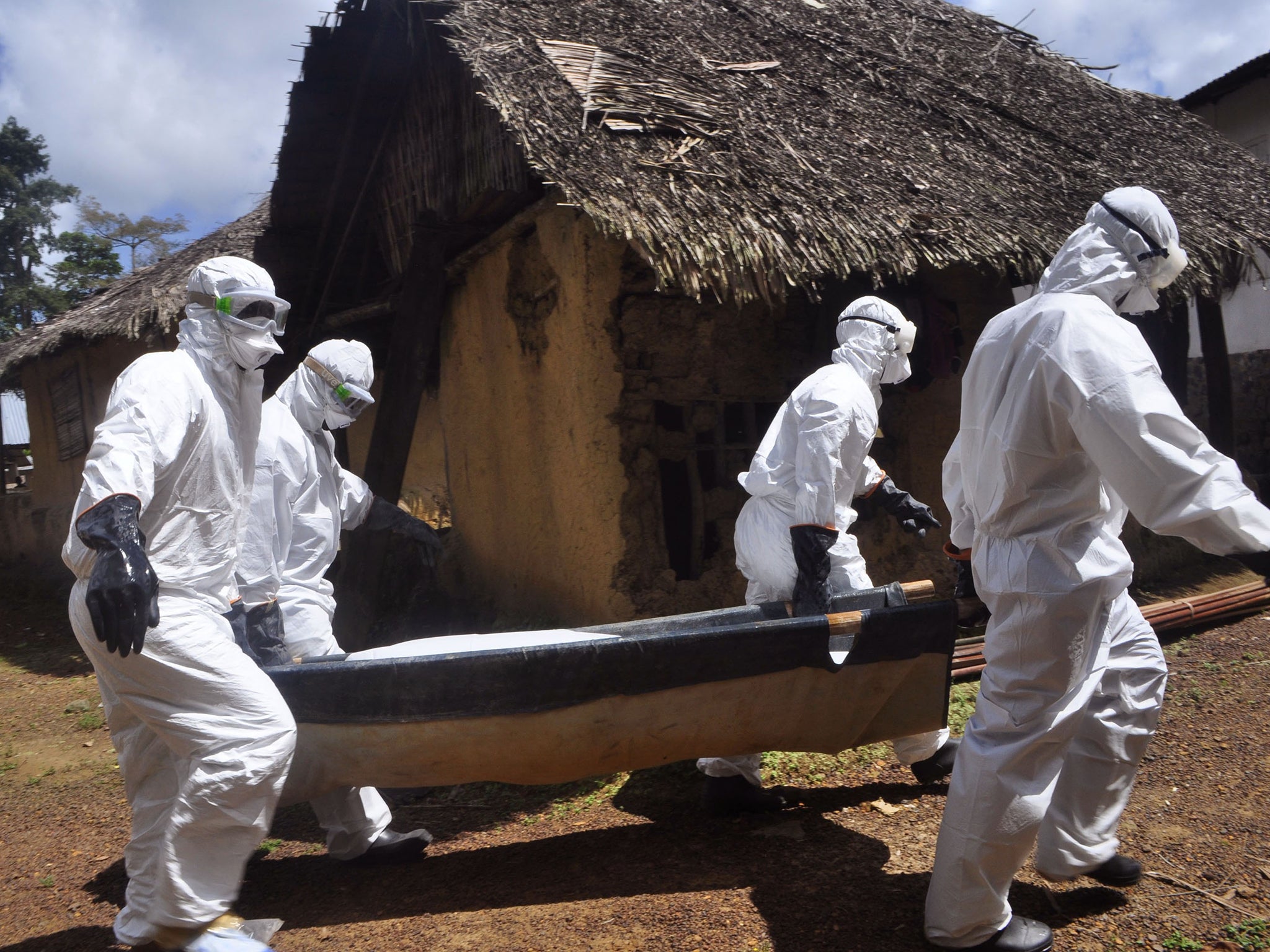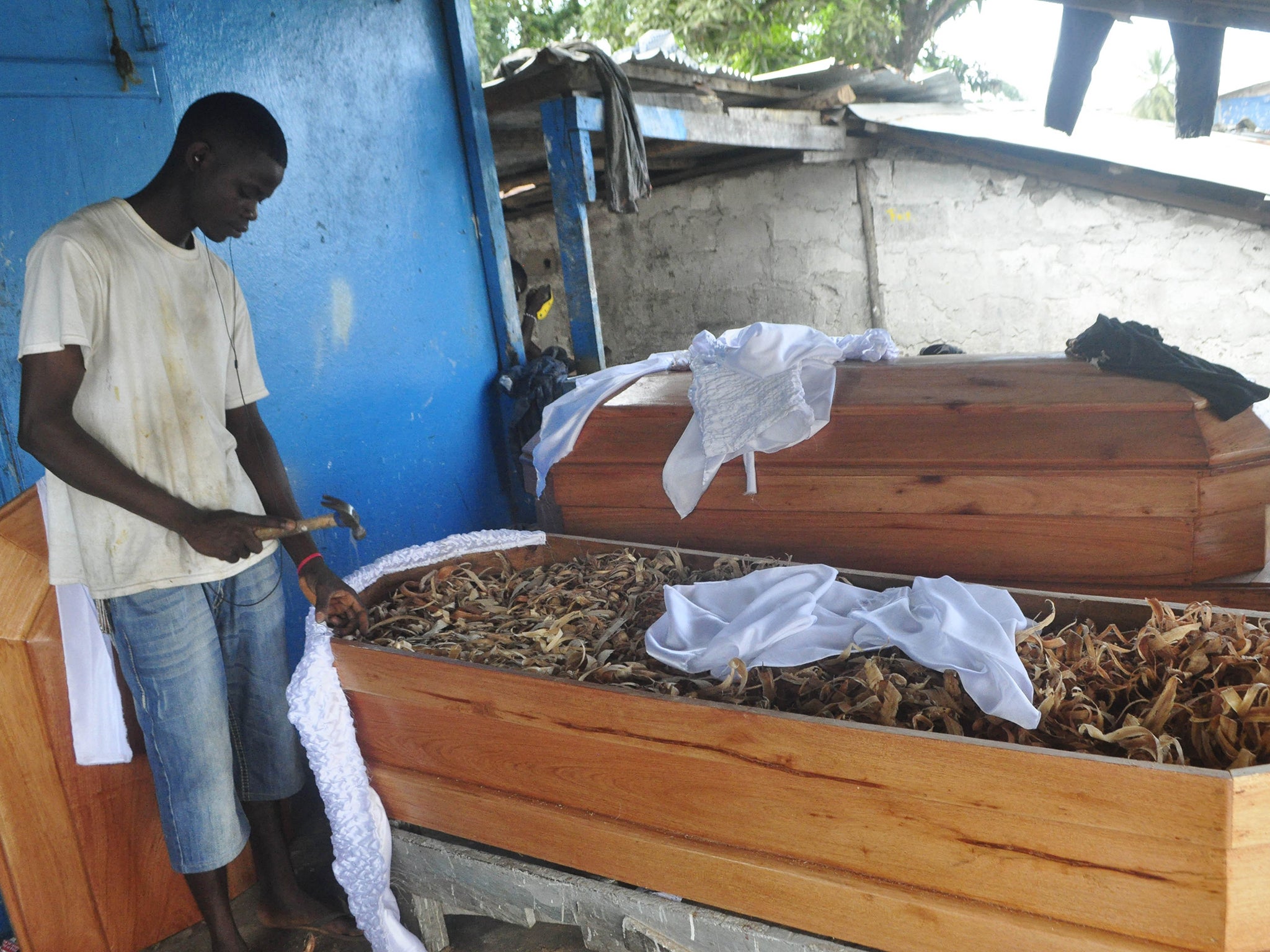Ebola outbreak: Virus to kill 67,000 in Monrovia by December, claims academic study
Experts say international commitments to combat the virus are 'grossly inadequate'

International commitments to combat Ebola in West Africa are “grossly inadequate” and tens of thousands could be dead in just one region of Liberia by mid-December if aid is not hugely increased, disease experts have said.
Official figures from the World Health Organisation (WHO) show that there have been nearly 10,000 cases and 4,868 deaths from Ebola so far, but difficulties in reporting mean that the figures considerably underestimate the true scale of the crisis.
In the first study to apply mathematical models of disease spread to the unprecedented outbreak, experts from Yale University and Liberia’s health ministry predicted that, in the worst-case scenario, there could be 113,000 cases and 67,000 deaths in Liberia’s Montserrado County, which includes the capital Monrovia, by 15 December.
Estimating that each Ebola patient in the region is infecting on average 2.5 people, they warn that the window of opportunity for “timely control of the outbreak” has passed and the “risk for catastrophic devastation both in West Africa and beyond might have only just begun”. Although the future course of the outbreak is unpredictable, the authors used models to estimate how many would be infected in different scenarios reflecting varying levels of international response.
Based on data collected in the field up to late September, they predict that even if Montserrado County had 4,800 more treatment beds and other measures in place by the end of October, there could still be 65,000 cases and 42,000 total deaths by mid-December, while a delay of just two weeks in providing the required aid would see those figures rise to 113,000 and 67,000 respectively.
One expert warned that their figures for bed numbers were optimistic. In September, the United States pledged to set up 17 treatment centres to isolate and treat 1,700 patients and, as of last week, Liberia has reported that only six of a total of 28 planned treatment centres are up and running, providing just 620 out of only 2,930 planned beds.
“Our results suggest transmission of Ebola virus will not be curtailed without much greater commitment to improvement of all preventative measures,” the authors, led by Alison Galvani, professor of epidemiology at the Yale School Public Health, write.
They add: “Perhaps most alarming is that, although we might still be within the midst of what will ultimately be viewed as the early phase of the current Ebola virus disease (EVD) outbreak, the window of opportunity for aversion of calamitous repercussions from an initially delayed and insufficient response is diminishing rapidly. Our predictions suggest that commitments are grossly inadequate to provide beds for infected individuals.”
Commenting on the study, which is published in The Lancet Infectious Diseases journal today, Professor David Fisman, an expert in epidemiology at the University of Toronto, said the growth of the epidemic so far had fit “so well with mathematical epidemiological idea that it seems torn from the pages of a text book.

“The epidemic threatens to evolve into a health and humanitarian catastrophe of historic scope,” he said.
However, some experts said the situation had changed since the report was written. Neil Ferguson, professor of mathematical biology at Imperial College London said that numbers of new cases in the area had “plateaued” and may now even be declining.
“It’s too early to say whether the control efforts in Monrovia have yet achieved control or merely slowed the epidemic,” he said. “But what is being seen is clearly incompatible with the results of this paper.”
Dr Thomas House, of the University of Warwick’s mathematics institute, said the authors had used “well-established methods to predict the most likely course of the epidemic” but cautioned standard models “might not be suitable for a wholly new scenario”.
“We have seen growth rates sometimes much faster than an exponentially growing ‘doubling’ model would predict, and sometimes much slower; no one is certain why” he said. Predictions about Montserrado County, which in 2008 had a population of 1.1 million, may not reflect rates of infection in other parts of the country, or in Sierra Leone and Guinea.
Liberia, a country which had just 51 doctors serving a population of 4.3 million before the Ebola outbreak, has been the worst hit, with 4,665 cases recorded by the WHO, and 2,705 deaths.
Join our commenting forum
Join thought-provoking conversations, follow other Independent readers and see their replies
Comments